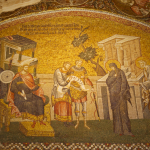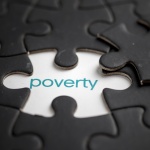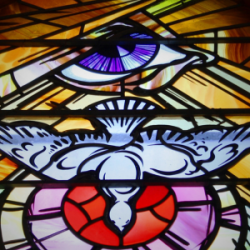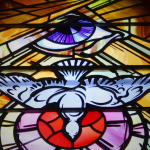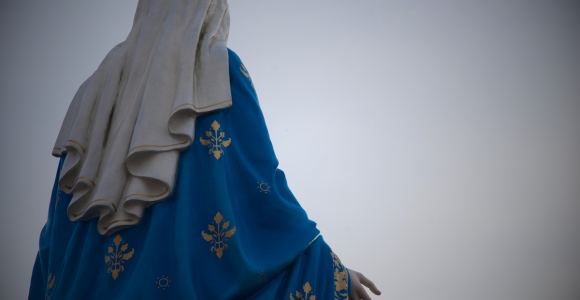
Again, in the early Jesus movement, Mary Magdalene was both an influential leader in the early movement and a symbol of support for women in leadership in the early church. Beginning in the 4th Century, though, we witness a shift to disparage women leaders, and Christianity moved toward a purely patriarchal form. The different versions of this story played a part in this history.
Part 2 of Mary, Christian Patriachy and the Existence of Poverty
Welcome Readers! Please subscribe to Social Jesus Here.
(Read this series from its beginning here.)
By the close of the 6th Century, Pope Gregory’s sermon conflates all these women to disparage Mary Magdalene. It calls Mary Magdalene a “sinful” prostitute, furthering the patriarchy’s accusation that women are innately morally inferior to men, and it forever changed Mary Magdalene’s reputation: she is never referred to as a prostitute in the gospels. It is interesting that the Eastern Orthodox Church never made Pope Gregory’s error of conflating Mary of Magdala with Mary of Bethany but kept them as separate and distinct figures. Thus, Mary Magdalene in the Eastern tradition was also never conflated with Luke’s “sinful” woman and never believed to have been a prostitute.
I want to say here that women whose work is prostitution should be valued in the same way as any other human being. Work is work. At the same time, prostitution today is very dangerous work due to its legal status and other social stigmas. We need to move away from using “prostitute” as a derogatory or disparaging slur.
The transition in the 4th to 6th Centuries that took Mary Magdalene from an influential early church leader to a “sinful” prostitute advanced the goals by the patriarchy of disparaging women as leaders in the Western Christian church.
One more note about Luke’s gospel. Mary Magdalene and Mary of Bethany and the woman who anoints Jesus are always portrayed as distinct and separate women in Luke’s narratives.
In Luke 7 we have the woman who with the alabaster box. This story ends with Jesus blessing this woman.
Jesus said to the woman, “Your faith has saved you; go in peace.” (Luke 7:50)
In the very next chapter (Luke 8), we read:
After this, Jesus traveled about from one town and village to another, proclaiming the good news of the kingdom of God. The Twelve were with him, and also some women who had been cured of evil spirits and diseases: Mary (called Magdalene) from whom seven demons had come out; Joanna the wife of Chuza, the manager of Herod’s household; Susanna; and many others. These women were helping to support them out of their own means. (Luke 8:1-3)
Luke refers to Mary here as “called Magdalene” (from Magdala in Galilee) “out of whom seven demons were cast out.” Luke could have easily said this was Mary, the same sinful woman I was just writing about! But no, this Mary is a new woman added to the story, and she financially supported Jesus in his work.
In addition, Luke also mentions Mary of Bethany. In Luke 10, she and Martha are still sisters, but they have no brother named Lazarus in Luke’s gospel. Mary of Bethany is an additional woman in the story.
As Jesus and his disciples were on their way, he came to a village where a woman named Martha opened her home to him. She had a sister called Mary, who sat at the Lord’s feet listening to what he said. (Luke 10:38-19)
So, in Luke, we have the woman in Luke 7, Mary of Magdala (Galilee) in Luke 8, and Mary, Martha’s sister, of Bethany (Judea, outside Jerusalem) in Luke 10. Never does Luke even remotely hint that these three are all the same women.
By the time we get to the last gospel in our canon, John has now lifted this story from being about a sinful woman to being about Mary of Bethany, Martha’s sister. In John’s version she has a brother named Lazarus whom Jesus raises from the dead.
“Now a man named Lazarus was sick. He was from Bethany, the village of Mary and her sister Martha. (This Mary, whose brother Lazarus now lay sick, was the same one who poured perfume on the Lord and wiped his feet with her hair.) (John 11:1-2)
It’s curious that Luke never mentions Lazarus as the brother of Mary and Martha of Bethany. Stop and ponder that. Luke never mentions something so significant in John’s gospel as to be the cause of Jesus’ crucifixion. In Luke, Jesus is crucified not because he raises Lazarus but because of his protest in the temple courtyard with the money changers. Why is this significant? It has to do with the existence of poverty. And we’ll begin there in Part 3.
Are you receiving all of RHM’s free resources each week?
Begin each day being inspired toward love, compassion, justice and action. Free.
Sign up at HERE.




